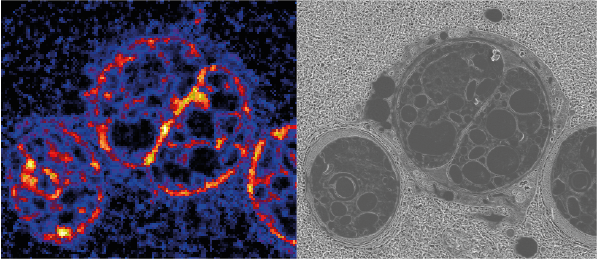
Symbiotic metabolism of corals and jellyfish in a changing environment
The Cassiopea sp jellyfish, like scleractinian corals, rely on nutrient input from their symbiotic and photosynthetic dinoflagellates to thrive. This symbiotic relationship in corals is much more sensitive to elevation of sea water temperature than in the upside-down jellyfish. Recently, an unbalance in the nutrient exchanges between the host and the symbiont under elevated temperature has been described in corals as a potential cause of bleaching. What are the metabolic underpinnings of this remarkable thermal resistance in Cassiopea?
The Cassiopea sp jellyfish, like scleractinian corals, rely on nutrient input from their symbiotic and photosynthetic dinoflagellates to thrive. But unlike corals, in which the relationship with its symbiont is generally destabilized after an increase of only few degrees (bleaching phenomenon), the upside-down jellyfish and their symbionts seems to tolerate a much higher increase of temperature without presenting any sign of stress. Recently, an unbalance in the nutrient cycling between the host and the symbiont has been described in corals as a potential cause of bleaching.
Using correlative electron microscopy and NanoSIMS, I will investigate the metabolic exchanges between the jellyfish host and its photosynthetic symbiont under elevated temperature, to try to identify the metabolic underpinnings of this remarkable thermal resistance.
